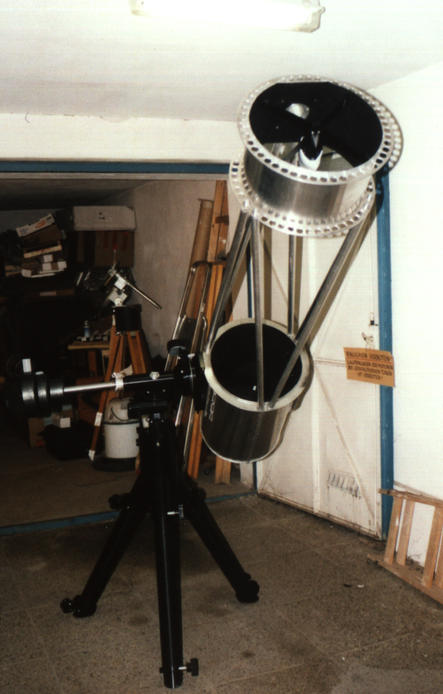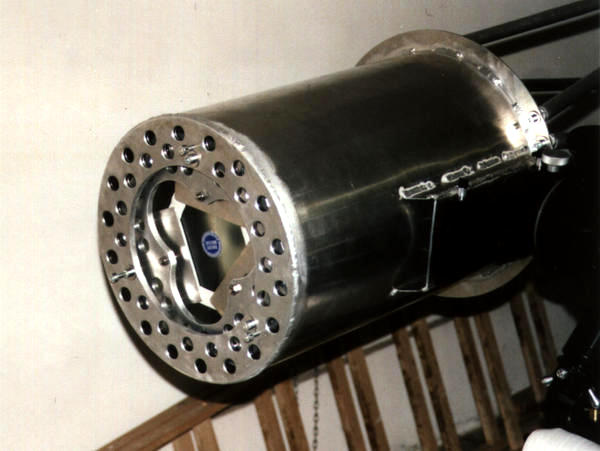
Here is my personal telescope, a 12.5" f/6 Newtonian.
Its main mirror was made by
Steve Swayze,
the 2.6" secondary stems from Astro Systems and is of good quality as well.
With 20.8% obstruction, the telescope has fairly good visual contrast
and a fully illuminated disk of 15mm diameter. That's sufficient
for most CCD-chips.
The instrument will (hopefully) be used in an observatory on
a robotic fork mount, so assembly time was considered as of
minor importance. The looking position is optimal for a
CCD camera, people feel somewhat different, I know ;-)
Here the telescope is shown on a Losmandy G11 mount from my friend "Howdii". Initial adjustment of the optical path and first light where carried out on it.
